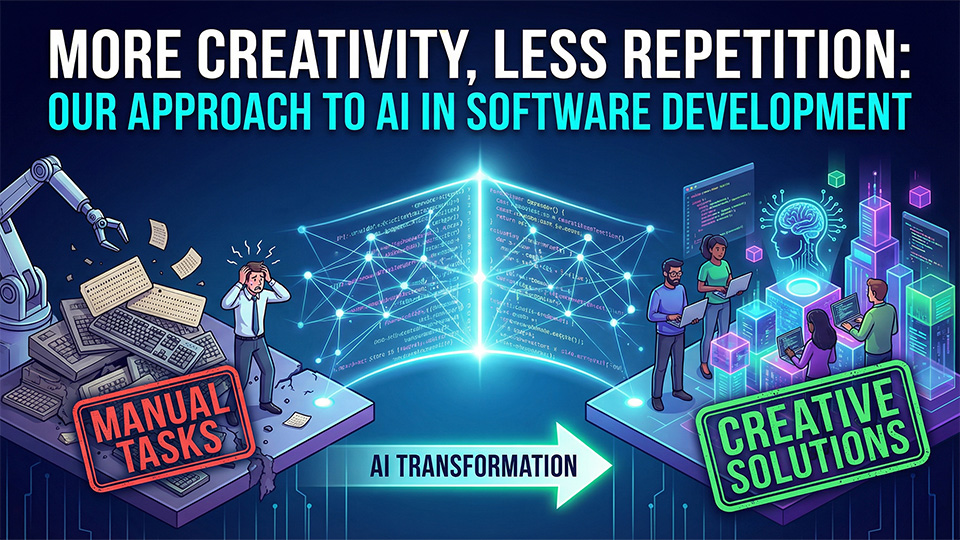July 21, 2025
Why Do 99.5% of Projects Fail? Unpacking the Top 7 Reasons & Finding Solutions
I. Introduction: The All-Too-Common Story of Project Derailment
Many projects begin with high hopes, only to face unexpected turbulence and the risk of project derailment. This is a common experience that leads to significant frustration.
The unfortunate reality is that a high percentage of projects struggle to meet their objectives, resulting in widespread project failure. These outcomes are often due to recurring, identifiable issues.
This article will uncover the key root causes behind these frequent setbacks. We will also explore effective solutions to navigate these challenges. Are you prepared to learn how to avoid common pitfalls and improve project outcomes?
II. The Failure Framework: Unpacking the Top 7 Reasons
Understanding the common culprits behind project failure is the first crucial step toward prevention and achieving consistent success. Many troubled projects share similar underlying issues that, if unaddressed, can easily lead to significant problems. Let's explore these top seven reasons in detail.
1. Unclear Goals & Persistent Scope Creep
The Pitfall
Projects often commence with vague objectives, lacking precise definitions of success, or they suffer from persistent scope creep, where uncontrolled changes continually expand project boundaries. This ambiguity creates a foundation of instability from the very beginning.
Why it Leads to Failure
When goals are indistinct, teams engage in misaligned work, pulling in different directions and wasting valuable effort. Unchecked scope creep inevitably results in severe budget overruns and significant time overruns, pushing the project far beyond its initial constraints.
Proactive Approach
A proactive strategy involves enforcing goal clarity through structured checklists and detailed project charters discussed in systematic reviews. Furthermore, a platform like Baulders helps manage this by providing centralized documentation to meticulously track and approve any scope changes, maintaining control.
2. Communication Breakdown
The Pitfall
Communication breakdown is a frequent saboteur, manifesting as siloed information where critical data doesn't reach all necessary parties, or through generally ineffective and infrequent updates among team members and stakeholders. This creates dangerous information gaps.
Why it Leads to Failure
Poor communication directly leads to team misalignment, as individuals operate on different assumptions or outdated information, significantly increasing the chances of errors. This can also foster misunderstandings, reduce team morale, and lead to critical details being completely missed, ultimately derailing progress.
Proactive Approach
Implementing real-time dashboards for project status and fostering centralized collaboration through a unified platform are essential proactive measures. Baulders supports this by facilitating structured reviews and providing a common space for all project communication and documentation access.
3. Inadequate or Non-Existent Risk Management
The Pitfall
Many projects suffer from inadequate risk management, where there's no formal process for early risk identification, assessment, or the development of mitigation plans. Teams often proceed with an overly optimistic outlook, ignoring potential threats.
Why it Leads to Failure
The absence of proactive risk management means projects are frequently blindsided by disruptive surprises that could have been anticipated and prepared for. This lack of foresight directly contributes to missed deadlines, budget blowouts, and even complete project stoppage when unmanaged risks materialize.
Proactive Approach
A robust approach includes regular risk assessment sessions; for instance, Baulders can enhance this as its AI capabilities help surface potential blind spots. Additionally, expert support offered through such platforms and risk-focused reviews ensure that potential threats are identified and addressed early.
4. Poor Stakeholder Engagement & Alignment
The Pitfall
Poor stakeholder engagement occurs when key individuals or groups with an interest in the project are either ignored, misinformed, or improperly managed throughout the project lifecycle. Their crucial input and support are consequently lost.
Why it Leads to Failure
Neglecting stakeholders often results in a critical lack of buy-in, which can manifest as resistance to project goals or shifting requirements mid-stream. This misalignment makes successful implementation and adoption significantly more challenging, sometimes leading to a final product that doesn’t meet true needs.
Proactive Approach
Actively involving stakeholders through inclusive reviews and maintaining transparency with shared dashboards promotes continuous alignment and buy-in. Baulders facilitates this by providing clear project status updates and a platform for structured stakeholder feedback, ensuring everyone remains informed and engaged.
5. Insufficient Resources or Unrealistic Estimates
The Pitfall
Projects are often set up for failure from the start due to insufficient resources—be it time, budget, or personnel—or wildly unrealistic estimates for task completion. Teams are then asked to achieve the impossible with inadequate backing.
Why it Leads to Failure
Persistently underestimated requirements and overcommitted teams inevitably lead to widespread employee burnout, significant project delays, and a notable compromise in the quality of the final deliverables. This creates a cycle of stress and underperformance.
Proactive Approach
Thorough upfront planning and regular reviews can help surface resourcing issues before they become critical. A platform like Baulders, with principles such as "Frugal by Design" embedded in its review frameworks, encourages an efficient focus on resource allocation and realistic planning from day one.
6. Ignoring Early Warning Signs & Data
The Pitfall
A surprisingly common issue is the tendency to ignore or downplay early warning signs and critical project data, often due to an optimism bias or a reluctance to confront emerging problems. Clear indicators of trouble are thereby dismissed.
Why it Leads to Failure
When red flags indicated by data are disregarded, minor issues quickly escalate into major, avoidable problems that become far more difficult and costly to resolve. This failure to act on early insights allows projects to drift further off course.
Proactive Approach
Leveraging tools that highlight potential issues is key; for example, Baulders' Health Score and AI-driven alerts can flag problems early, prompting necessary attention. Structured reviews then provide the forum to analyze this data and implement timely course correction before significant damage occurs.
7. Ineffective Project Monitoring & Lack of Control
The Pitfall
Many projects suffer due to ineffective project monitoring, meaning there's no consistent tracking of progress against plans, and consequently, a profound lack of control and accountability. Without this oversight, projects easily lose direction.
Why it Leads to Failure
A lack of diligent monitoring means that project drift goes unnoticed until it's too late, leading to poor decisions based on incomplete or outdated information. Ultimately, the absence of mechanisms for corrective action ensures that deviations from the plan become permanent setbacks.
Proactive Approach
Implementing real-time tracking of key performance indicators and establishing structured checkpoints are vital for maintaining control over project execution.
Baulders supports this by providing tools for continuous monitoring and frameworks for regular reviews, enabling timely adjustments and informed decision-making.
III. The Common Denominator: A Call for Systematic Oversight
After examining these top seven reasons for project failure, a clear pattern begins to emerge. While diverse in their specific manifestations, many of these pitfalls share a common root: a fundamental lack of proactive oversight and a robust systematic review process. This absence creates vulnerabilities that even the best teams can struggle to overcome.
The good news is that implementing such oversight isn't about adding burdensome bureaucracy; rather, it’s about making a strategic investment in project health and success.
Proactive reviews, when conducted effectively, are an essential tool, not an overhead. They provide numerous benefits:
- Early identification of potential risks and emerging issues before they escalate.
- Improved communication and alignment among team members and stakeholders.
- Data-driven decision-making for timely course corrections.
- Enhanced accountability and a clearer understanding of project status.
- Continuous learning and process improvement for future projects.
This is precisely where a dedicated platform can make a significant difference. Baulders is a solution thoughtfully designed to embed this crucial systematic review process directly into your project workflow, making proactive oversight a consistent and manageable practice.
It aims to transform how projects are monitored and guided.
IV. Conclusion
The prevalence of project failure can feel disheartening, but it is not an unavoidable outcome. Armed with an understanding of the common root causes and a commitment to proactive strategies, teams can significantly improve their chances of success. Awareness and deliberate action are the keys to navigating complexity.
We invite you to explore how Baulders can help you implement these vital changes, transforming your approach to project management. Leverage the power of Baulders for structured, AI-enhanced reviews designed to build true project resilience from the ground up. This is your opportunity to turn the tide on common pitfalls.
Ultimately, embracing systematic oversight and the right tools empowers organizations to not only avoid costly failures but also to consistently deliver impactful results and cultivate a stronger project culture.






























.svg)













